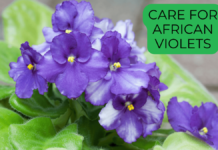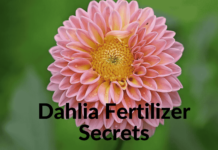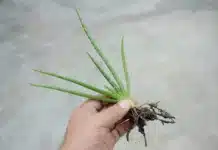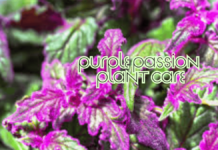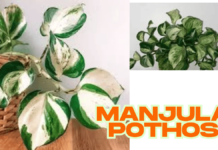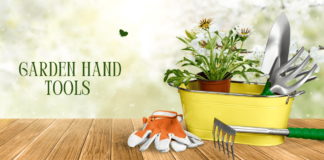Introduction: Overcoming the Challenges of Growing Herbs in Hot Climates
Growing herbs in hot climates can be a challenging but highly rewarding experience. Whether you’re in a Mediterranean region like Mesa, Arizona, or experiencing intense summer heat, it’s possible to grow a thriving herb garden with the right knowledge and preparation. From rosemary to mint, thyme, and basil, herbs are some of the most versatile and beneficial plants to grow, enhancing both your meals and your garden. In this article, I’ll share my experience and the top tips to help you succeed in hot climates and get the most out of your herb-growing journey.
Why Growing Herbs in Hot Climates Can Be Tough

In regions with hot, dry summers, and rocky soil, herbs may struggle to thrive due to the heat and lack of moisture. High temperatures can cause many plants to go into survival mode, slowing their growth and possibly leading to dormant periods. However, with the right care, even in challenging conditions, it is possible to grow good, flavorful herbs that will prosper.
The Best Herbs to Grow in Hot Climates

Some herbs are better suited to hot environments due to their perennial nature, meaning they return each year. Rosemary, thyme, oregano, sage, and lavender are all Mediterranean herbs that naturally thrive in hot, dry conditions. These plants require minimal water once established and can withstand the harsh sun of summer without too much difficulty.
Annual herbs such as basil, parsley, cilantro, and chamomile can also be grown successfully in hot climates with the right care. These herbs may need more attention and water than perennials, but they still flourish in sunny, well-drained soil.
Tips for Growing Herbs in Hot Climates
1. Choose the Right Spot for Your Herb Garden
The location of your herb garden is crucial to its success. Choose a spot that gets plenty of sunlight throughout the day. Most herbs, like basil and rosemary, love full sun, but you also need to provide some afternoon shade for more delicate varieties such as parsley and mint, which can struggle in intense heat.
2. Opt for Raised Beds or Containers for Better Drainage
If you’re struggling with soggy soil or poor drainage, a raised bed or container gardening might be the best option. Herbs like oregano, thyme, and garlic need well-drained soil to prevent root rot. A container will allow you to control soil quality and moisture levels more effectively.
3. Amend Your Soil with Organic Matter
In hot, dry climates, the soil can often be too dry or compacted. Adding compost or organic matter to your garden bed can improve drainage and make the soil more nutrient-rich. This also ensures that your herbs get the good nutrients they need to thrive.
4. Water Regularly, but Avoid Overwatering
Herbs like rosemary and sage don’t require as much water once they’re established, but in hot climates, they still need consistent moisture. However, be careful not to overwater, as this can cause roots to rot. Watering deeply but less frequently will encourage deep root growth, helping your herbs survive hot summers.
5. Mulch to Retain Moisture and Keep Roots Cool
Using mulch, such as straw or wood chips, around your herb plants will help retain moisture and keep the roots cool. Mulching is particularly important in hot climates where water evaporation happens quickly. It also prevents weeds from competing with your herbs for nutrients and water.
6. Prune and Harvest Regularly to Promote Healthy Growth
Regular pruning helps your herbs stay healthy and productive. Remove dead or damaged growth and regularly harvest leaves for cooking or drying. Pruning will also prevent your plants from becoming too leggy and encourage them to produce fresh, new growth, even during hot months.
7. Protect Against Pests and Insects
Insects and pests can be a common problem for herb gardeners in hot climates. The presence of pollinators like ladybugs can help control harmful insects. Use natural pest control methods, such as planting garlic, rosemary, or basil near your other herbs to deter unwanted guests.
8. Provide Some Afternoon Shade
While most herbs love the sun, the intense afternoon sun can be too much for some plants, especially in the peak of summer. Consider shading your herb garden during the hottest part of the day, particularly for more sensitive herbs like cilantro and parsley. This can help them continue to grow without going into dormant mode.
9. Use Fertilizer Sparingly
In hot climates, too much fertilizer can overwhelm your herbs and cause excessive leaf growth with little flavor. Use a balanced fertilizer sparingly, and be sure to choose one that promotes strong, healthy roots rather than just lush top growth.
10. Plan for Seasonal Changes
As temperatures drop in fall and winter, some herbs will go dormant, while others may struggle to survive. Be prepared by planting perennial herbs that can withstand frost and replanting annual herbs in the spring. You may also consider bringing certain herbs like mint, thyme, or parsley into a container for the cooler months.
Additional Considerations for Growing Herbs in Hot Climates
Companion Planting for Pest Control and Healthy Growth
Certain herbs work well together and can help each other thrive. For example, basil planted next to tomatoes can deter pests, while rosemary can help protect carrots and lettuce from insects. Companion planting is an excellent strategy for creating a healthier, more resilient garden.
Native Herbs to Grow in Hot Climates
Native herbs, such as bay laurel and lemon verbena, are already adapted to the dry, hot conditions of certain regions. By choosing native varieties, you’ll reduce the need for extra care and maintenance, as these herbs are naturally suited to their environment.
Conclusion:
Growing herbs in hot climates may seem challenging, but with the right knowledge and care, it’s possible to create a thriving herb garden. By selecting the best plants for your climate, ensuring good soil and water practices, and managing pests naturally, you can enjoy fresh, flavorful herbs all year long. Whether you’re growing rosemary, mint, basil, or even more exotic herbs like ginger or turmeric, your herb garden can flourish with a little time, effort, and love.
FAQs:
What herbs thrive in hot climates?
Some of the best herbs for hot climates include rosemary, thyme, sage, lavender, oregano, and basil. These are all Mediterranean herbs that do well in dry, sunny conditions.
How often should I water herbs in hot climates?
Herbs in hot climates should be watered deeply but less frequently. Ensure that the soil is moist, but not soggy, to avoid root rot. Once established, perennial herbs need less water.
Can I grow herbs in containers in hot climates?
Yes! Container gardening is an excellent choice for hot climates as it provides better drainage and allows you to control soil conditions more easily.
How do I protect my herbs from pests in hot climates?
Use natural pest control methods such as planting garlic or rosemary to deter insects. Additionally, companion planting and encouraging pollinators like ladybugs can help keep harmful pests at bay.
Which herbs need afternoon shade in hot climates?
Herbs like parsley, mint, and cilantro prefer some afternoon shade in hot climates, as intense afternoon sun can stress these plants.



